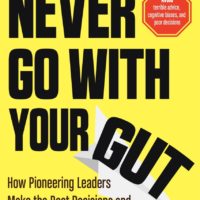
Written by Laura Patterson – President of VisionEdge Marketing, Inc.
If you’re like many of our customers, right now you are somewhere in the midst of your planning cycle, working with your partners in Sales, Finance, Product, and IT as you crystallize your Marketing plan. Here’s a bit of advice: Our experience has proven that a collaborative Marketing planning session is an essential step in this process.
Focus on 5 Best Practices for Your Planning Session
Our experience facilitating meetings like this has provided us with a number of best practices that we stick to when developing the planning session agenda and structure. Here are our suggestions for five areas to focus on as you build your own.
- Make it about more than the just the plan. Design your marketing planning session agenda with a focus on improving Marketing’s ability to measure its contribution to the organization and manage performance. Enabling the team to make more strategic market, customer, program, and investment decisions will show your team and the C-Suite that this work is connected to the bigger picture.
- Hone performance metrics from the start. As we’ve stated many times, it’s critical to align Marketing to business outcomesand to establish clearly how Marketing is expected to support these outcomes. Research in the area of Marketing Performance Management (MPM) consistently confirms that alignment and accountability are what set apart best-in-class Marketing organizations. Make sure you have a well-constructed Marketing dashboard based on performance targets, metrics, and data chains built from specific information on what the business wants to achieve (e.g., a market share target in a specific segment/category), how Marketing will contribute (e.g. X qualified opportunities from Y customers in the specific segment), and the strategy Marketing will deploy (such as influencers and customer referrals). Find out the degree of your MPM maturity.

- Keep the customer in mind. It’s easy to quickly get mired down with tactics and activities in these planning sessions, but all activities should be matched to programs. In addition, programs need to support a strategy – ideally a customer-centric strategy. That means you will need to understand the personas and their content, touch points, and channel preferences. Consider what has worked for you in the past, what hasn’t, and what insights into the customer experience you’ve gathered along the way. Capture the most frequent issues/challenges/pain points of customers – this data can even be disseminated in advance of the meeting to give attendees some time in advance for contemplation.
- Don’t forget the competition. Most of us share the market with competitors. You need to understand each competitor and how to positionyour company and its products accordingly. Do you know where there is opportunity, and where there is risk? If your market is undergoing change, what changes are happening? What is the potential impact of these changes?
- Avoid turf wars. Design your marketing planning session to focus on what Marketing needs to do to move the needle. The objectives in the Marketing plan are what Marketing needs to own. Likewise, the other functions within the company will craft their own objectives. Business outcomes are shared across organizations, and each part of the company plays a part in achieving the outcome. Ideally all the plans and associated objectives will work together to support the company’s outcomes.
A Professional Can Help With Planning
Sometimes knowing what to do is easier than knowing the best way to do it. Maybe your Marketing team is lean, or there is no one on the team with best-practice expertise. Or perhaps you just need a catalyst for change or an objective point of view. A third party can help develop/re-engineer your marketing planning processes, ultimately speeding achievement of the revenue-oriented benefits. Consider these five capabilities when evaluating potential partners:
- Marketing planning expertise
- Quality of pre-developed tools/templates/frameworks
- Experience working with other companies in your industry
- Utilization of knowledge transfer methods so that your team can implement best practices for process development, change management, and communication going forward
- Relevant positive references
For more about why a best-in-class approach is critical, and how VisionEdge Marketing can help, see this informative video.




